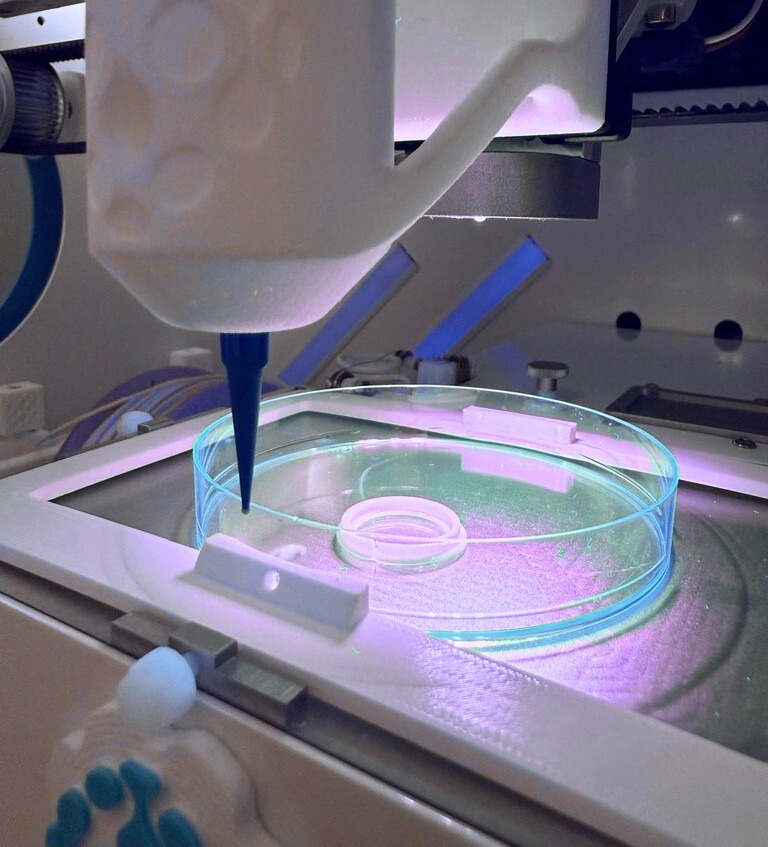
Let’s talk about the functionality of BioCloner – the third part of our series on this innovative technology.
UV-A Crosslinking – it is a process in which the polymer changes its properties under ultraviolet (UV) light, resulting in hardening.
What is the purpose of performing it?
- Photo-crosslinking enables the curing and stabilization of 3D models, allowing for accurate replication of biological structures and maintaining their durability during research.
- It also allows for the creation of stable tumor models or organoid constructs, which serve as realistic environments for advanced clinical research.
This is a very useful feature—especially when we want to stabilize the shape of the printed model or protect it from any mechanical damage.
How is the UV-A crosslinking process carried out on the BioCloner Desktop Pro?
The machine offers 2 UV-A crosslinking modes: static and dynamic.
- The static mode involves curing the print in one fixed spot – the UV-A LEDs pause at a specific height above the model to crosslink a targeted area.
- In dynamic photo-crosslinking, the UV-A LEDs move along a designated path, evenly curing the entire construct.
The parameters are customizable – the user can set the appropriate distance and light intensity for the specific material, as well as the duration and frequency of the process.

